
Mr. Bellos, my Art History teacher tried to make the field trip to The Getty Villa educational as much as he could. Monday last week he let us choose certain statues or art pieces displayed at the getty, which we were supposed to do research on and present to the class when we're there.
I chose Julia Titi - if I remember correctly - she's the daughter of Emperor Titus and her Uncle Domitian's mistress. While presenting i threw in big words and brought up (what i think is stupid) ideas about her.
for example: "this is julia titi blah blah blah. She comes from the flavian period - a.k.a the early roman empire. She is royalty, we can tell by her coiffure which became a trend for all women during this period. She wears a crown of royalty, and there are wholes on her neck and her ears where jewellery used to hang. Notice the chiaroscuro in her hair which creates a dramatic effect. She is partially idealized, portrayed as young when she could have actually been late in her years of life when this was created....."
I went on for about 5 minutes..maybe less.
We were kept busy for pretty much the whole day with either these presentations or by our tour guides. Sometimes my friends and I would get bored standing around and listening to the presentations, so we would linger in the back of the group and get to sneak around taking pictures when Mr. Bellos wouldnt be looking.
These are some statues that i thought were entertaining:
Alexander: I saw this one in my textbook, so i was excited to see it in person.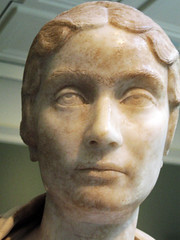
Roman woman.
Check out the ancient unibrow. I'd hate to be remembered looking like that..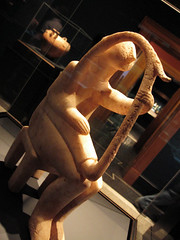
Cycladic art. This was also in my textbook.
The rest are just different areas around the getty.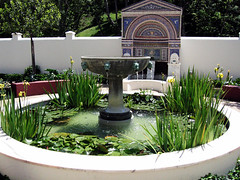



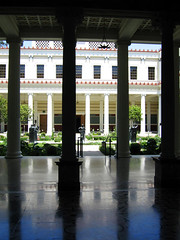
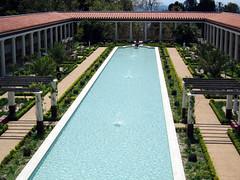
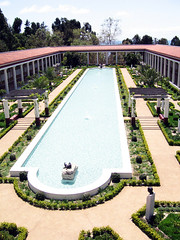
Sunday, April 30, 2006
The Getty Villa
Posted by
Sef
at
11:48 PM
1 Thoughts
![]()
Friday, April 28, 2006
To be continued....
Here's another preview...please be patient :)
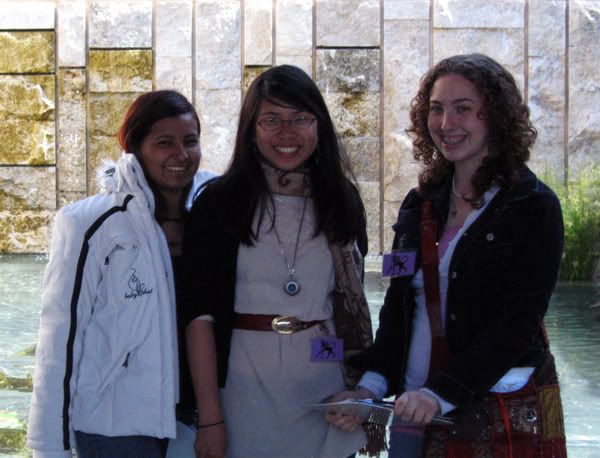
Arlene, Katherine, Me
Posted by
Sef
at
6:47 PM
0
Thoughts
![]()
Thursday, April 27, 2006
One of The best days yet!
The field trip to the Getty Villa was amazing. The place is stunnig, beautiful, awe-inspiring. You get the idea.
Here are just a few pictures - More to come! (and stories..)
left: Katherine Top: Arlene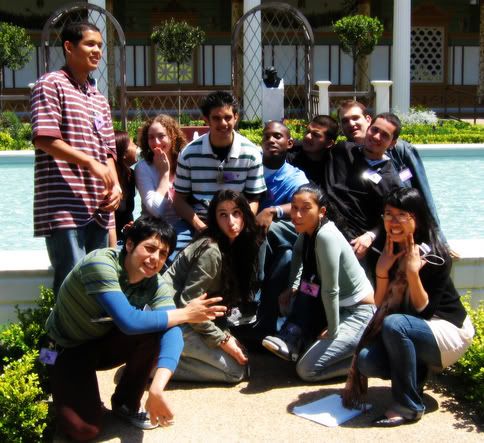
Left to right starting with the top row (ignoring the guy in the stripe shirt)
Arlene, Me, Raul, Jonathan, Johan, Kevin, David
Bottom row: Jimmy, Angelica, Nathalie, Katherine
Posted by
Sef
at
1:35 PM
0
Thoughts
![]()
Monday, April 03, 2006
Lightstone, Gillian
4-2-06
Chemistry p. 4
Opening up the Honors Chemistry Student’s mind
It was in 1850 when the Epidemiological Society was founded in order to find the causes of cholera and other “epidemic diseases.” But even before the society was created, diseases had been around for centuries, killing thousands of people at a time. The reason why an honors chemistry student should read this book would be so they could explore the many different branches in which chemistry stems into, epidemics being one of many.
The job of an epidemiologist is to find ways on how to stop an outbreak of a disease and at the same time deepen the world’s knowledge of the disease process. In 1330 a plague - known as Black Death or the bubonic plague - hit Europe. In the time span of 20 years it was recorded that Europe lost about 25% to 33% of its population. It can be deduced that because there was a lack of knowledge in science during those years, the disease was able to spread out faster.
The bacteria that caused the bubonic plague goes by the name of Yersina pestis. The process of how the disease came to people was through infected rats, which when they died the fleas that lived on them would jump feed off of humans - ultimately giving them the disease. Because there was a lack in science, chemistry, or medicine – the disease was able to spread rapidly and would kill about half a household’s inhabitants.
An honors chemistry student should open their mind to the many possibilities of science, and where it can take you. It is important that the study of Epidemiology be continued that way the patterns of diseases be studied carefully which could possibly lead to the cure, or containing of future outbreaks.
Posted by
Sef
at
1:00 AM
0
Thoughts
![]()

